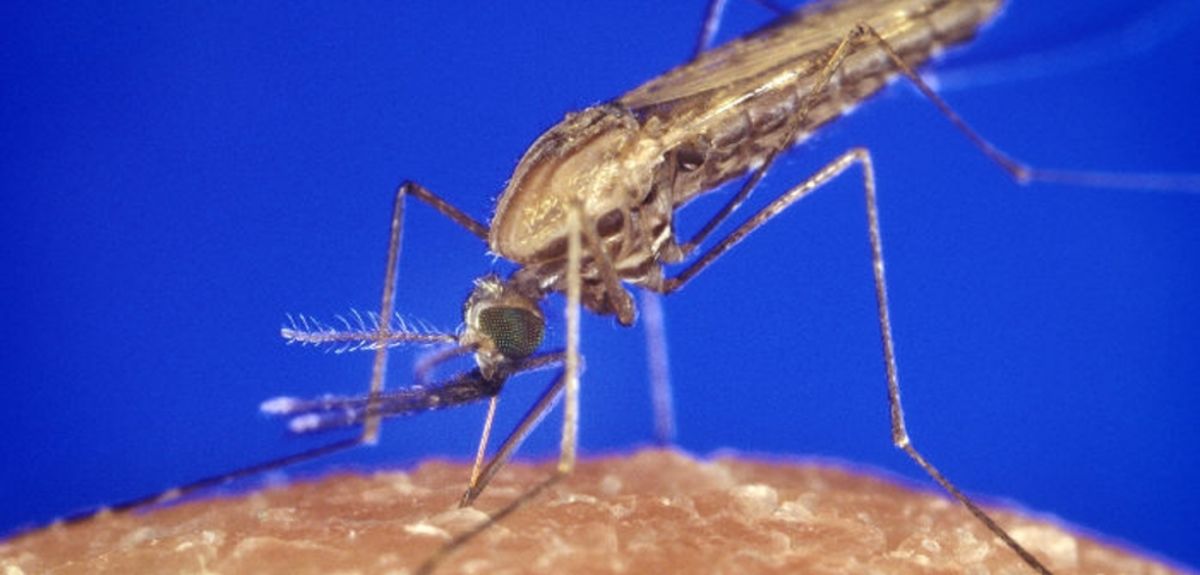
Homing in on the mosquito
In the battle against the mosquitoes that carry deadly human diseases scientists are recruiting a new ally: a genetic enemy within the mosquito's DNA.
These new recruits are homing endonuclease genes (HEGs), 'selfish' genetic elements that have a better than normal chance of being passed on between generations despite being potentially harmful to an individual.
HEGs can recognise and 'cut' a short sequence of DNA on one of a pair of chromosomes, then fool an organism's repair mechanism into copying the HEG across onto the other chromosome. The HEG gets inserted within the 'cut' sequence of 'normal' DNA whilst the 'cut' is repaired. It is this 'drive' that makes HEGs particularly interesting for disrupting DNA and hence mosquito control.
Crucially HEGs can be used to recognise and disrupt a bit of DNA that really matters – that is important for an individual mosquito to survive from egg to adult.
'HEGs occur naturally in some simple organisms, such as single-celled fungi, and have been artificially inserted into the genomes of other organisms, notably the mosquito species, Anopheles gambiae, that is the main vector of human malaria,' explains Mike Bonsall of Oxford University's Department of Zoology.
'They can be used either to suppress mosquito populations by altering the inheritance patterns of genes (for example genes that affect survival) or to alter the genetic structure of mosquito populations by driving genes that alter the key mosquito characteristics (such as the ability to transmit a pathogen).'
Such a genetic approach could be an important weapon against diseases like malaria, which is responsible for up to 1.6 million deaths a year worldwide, by reducing the numbers of disease-carrying adult female mosquitoes in a local area to such a level that there aren’t enough to support and pass on the infection to humans.
But HEGs are not simply 'genetic homing missiles' that kill mosquitoes: such selfish genetic elements have to spread, the individuals carrying them have to compete, and populations respond and change.
'While it is necessary to understand the population genetics and patterns of HEG inheritance, the effectiveness of HEGs requires an understanding of both the ecology and genetics. The population dynamics and ecology determine how individuals in a population compete, grow and disperse,' Nina Alphey of Oxford University's Department of Zoology tells me.
'Population genetics might predict that a HEG that reduces survival will naturally spread through a population, but that does not necessarily mean the population will be reduced enough to significantly alter disease transmission. Simply knowing the genetics is not quite enough.'
To explore how interactions between ecology and genetics can influence the effectiveness of HEG-based mosquito control Mike and Nina developed a mathematical model as part of a BBSRC-funded project. They report their findings this week in Journal of the Royal Society Interface.
'One significant finding from our work is that we show that the type of competition affects the outcome of HEG-based control. If competition is particularly strong, alterations in early larval survival could lead to an increase in mosquito population size, rather than its decline,' Mike explains. 'This occurs as the population is 'freed' from its natural ecological control – which in mosquitoes occurs in the late-larval stage.
'We also showed that if a HEG does not just reduce the mosquito's survival, but also changes how that mosquito fares during the larval competition, it could achieve a better reduction in mosquito numbers than an identical HEG that simply reduced survival. The effects of a HEG that affects both survival and timing of competition would need to be carefully monitored to ensure that population suppression is achieved.'
Whilst with larger animals it might be possible to monitor individuals as a way of understanding population dynamics this is impractical for populations of thousands of insects, such as mosquitoes, linked to tiny patches of habitat – a small pond or even just a container of water.
Mathematical models are the only practical way of studying the links between genetics and ecology and identifying potential pitfalls in any genetic insect control approach – such as HEGs acting early in an insect's lifecycle being less effective than ones acting later on.
'We are working on extending our modelling approaches to understanding the control of mosquitoes by integrating economics and the cost-effectiveness of control programmes. This involves linking the costs of rearing modified mosquitoes, the epidemiology of the disease, the movement of people and mosquitoes and evaluating the public health benefits,' says Nina. The team have created an online game that highlights some of the issues faced by any control programme.
There are a lot of factors to consider in a future model: another variable is that in the wild populations compete with other species. For instance the malaria-carrying Anopheles gambiae mosquito may compete with various other species, and the dengue-carrying Aedes aegypti and the less competent Aedes albopictus compete with each other in some regions, so that reducing the numbers of one disease-carrying species could boost the numbers of another.
Mike tells me: 'We hope to work out when and where it might be appropriate to combine these insect control strategies with other disease implementation methods (such as vaccination programmes). Also thinking on how these insect control strategies can be used to control the spread of resistance to conventional control programmes is a new BBSRC project we have very recently started.'
 Tamiflu: an analysis of all the data
Tamiflu: an analysis of all the data MeerKAT is shape of things to come
MeerKAT is shape of things to come How short is your time?
How short is your time?